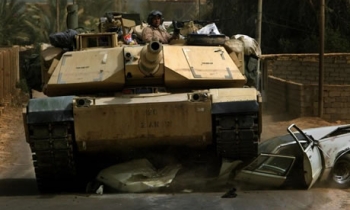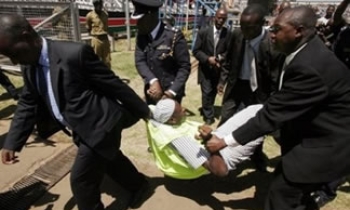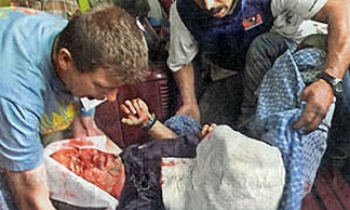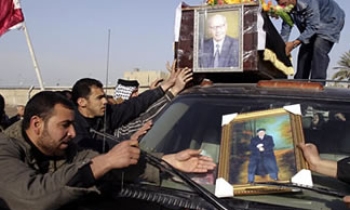As Israel’s attacks on Hezbollah targets in Lebanon have escalated in the past two weeks, photographers flocking to cover the conflict have encountered particularly difficult and dangerous conditions.
A Lebanese freelance photographer, 23-year-old Layal Nagib, died July 24 when a bomb exploded near her car during an Israeli attack on Cana, near the coastal city of Tyre in southern Lebanon. Nagib, who was represented by Agence France-Presse, was covering the conflict for Lebanese magazine Al Jaras, according to press reports.
Among the many photographers now in the area are Frederic Lafargue, Michael Robinson Chavez, Carolyn Cole, Robert Gauthier, Paolo Pellegrin, Davide Monteleone, Thomas Dworzak, Stanley Greene, Noel Quidu, Farah Nosh, Kate Brooks, Kadir van Lohuizen, Chris Anderson, and Timothy Fadek, to name only a few. A Reuters spokesperson says the wire service has five staff photographers and seven local stringers in different parts of Lebanon.
“There are more and more photographers arriving each day,” says photographer Stephanie Sinclair, who has made Beirut her home base for the last two years. “It is pretty safe to move around Beirut but moving around the south is pretty tricky as the Israelis are bombing throughout the day and it is hard to know what they will deem a target. Each time you go to the south, it is a gamble.”
Getty Images photographer Spencer Platt says photographers in Beirut have been scrambling to the scene of explosions whenever they hear them, but doing so isn’t easy because Hezbollah is keeping photographers at arms length. “They’re very suspicious of our motives,” he says, explaining that they suspect there are Israeli spies among the Western journalists. Moreover, Platt says, Israeli aircraft are targeting cars in some places, so if you go on certain roads, "There's a high probability that you'll be attacked."
Bruno Stevens, a Brussels-based photographer represented by Cosmos, reports that he arrived in Lebanon shortly after the fighting began on July 10, having taken a taxi from Damascus to Tripoli, then down the coast to Beirut and south to the port city of Sidon.
"It's dangerous to drive because even if you're in a car or motorcycle, they [Israeli helicopters] can think you're Hezbollah," he says, explaining that the roads in southern Lebanon are exposed. “The danger is not being shot at, it's going to be a helicopter dropping a bomb on you."
Beth Flynn, foreign picture editor at The New York Times, says the paper has three photographers in Lebanon: staff photographer Tyler Hicks, who is currently in Tyre, staffer Joao Silva and freelancer Bryan Denton, both of whom are in Beirut.
Despite reports that the bombing of communications towers had disrupted communications, Flynn says she’s had “no problem” communicating with the Times photographers, who are using local cellphones, satellite phones and R-BGAN (regional Broadband Global Area Network] portable modems.
Flynn notes that as more photographers enter the area, and travel becomes riskier, prices are rising. For example, when Hicks flew in through Damascus, Syria on July 16, he had to pay about $600 to hire a driver to take him to Lebanon, Flynn says. When Silva took the same route five days later, the taxi ride cost him about $1,000.
Flynn says Hicks is one of several journalists currently staying in a hotel in a predominantly Christian neighborhood of Tyre that's "not necessarily a target," however "there's a line that they feel if they cross" into a
Hezbollah-dominated neighborhood, "it's a suicide mission."
Israeli bombardments, Flynn continues, have restricted photographers movements, and within the safe areas, "there's a limited amount to shoot."
Flynn is discouraging photographers from attempting to go on spec. At least one freelance photographer has contacted her to say he was thinking of going, Flynn recalls. "I said to him, there are already a lot [good photographers] there already, and it's going to be hard to get anything. The cost is so high—the cost of safety alone—that you're not going to make it back without guarantees. You need a sixth sense about when it's dangerous and when you need to get out.
“It's a lunatic mission to go in there by yourself," she says.
Holly Stuart Hughes and Daryl Lang provided reporting on this story.









